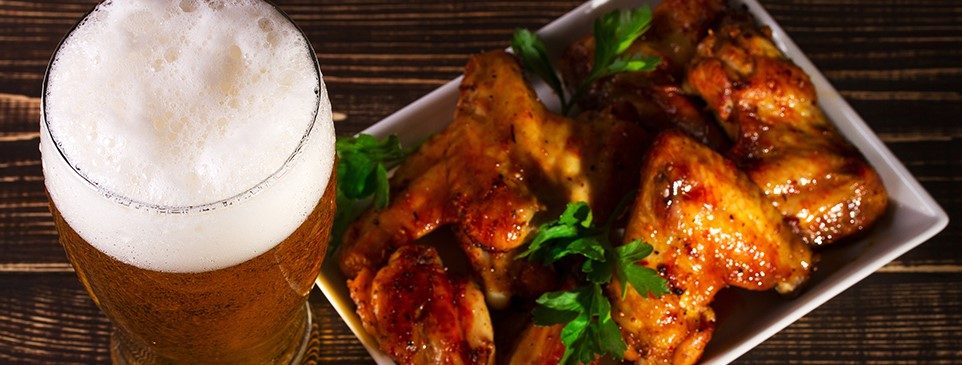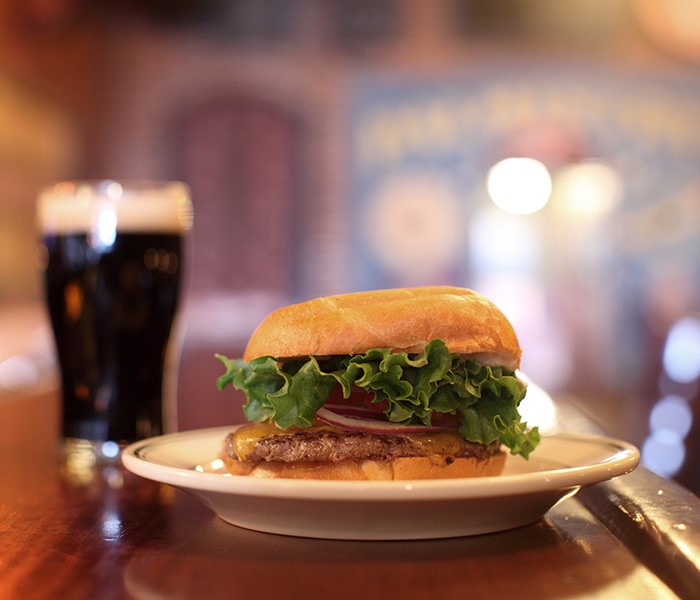So You Want To Become Food Led? Here’s How To Get Involved With Pub Grub

So You Want To Become Food Led? Here’s How To Get Involved With Pub Grub
Serving food is a great way to increase your appeal in the community and bring in a different sort of clientele with a higher spend per head.
So what do you need to look into to realise your potential as a food led premises?
Firstly check your licensing conditions re food serving. If you do not have permission then you will need to give at least 28 days notice of opening to register with your local authority.
If you need to make changes to your premises you need to inform enviromental health so they can organise an inspection.
Its a good idea to ask yourself some tough questions at this stage, like is your premises suitable and if so what limitations do you have eg kitchen size, locality, seating, outside space etc.
A good resource for the basics as to what the local authority and enviromental health will be looking for can be found in this link.
Check out the competition.
Research is key. What’s on offer from other pubs in your local area, check a good 5 miles radius and think about key times of day. Can you tap into office workers if you have commercial buildings nearby? Mums wanting a meet up with pre school kids?
What are the other local food places doing and what are they charging. Don’t be afraid to have a meal in some of these places, its all good market research and you can gain great insight good and bad.
As the saying goes “Failing to prepare is preparing to fail”!
Think Prep, Storage & Serve Time!
You have analysed your kitchen and what you have room to store, this and how quickly it will take to make the meal ideas you have, should form the basis of your menu planning.
Taking ages to deliver even a great quality plate of food will not win you friends or repeat customers.
Again its research. You are far better having a small, varied and well executed menu then a large one which requires lots of different ingredients that could result in high levels of wastage and lengthy prep times.
Then there’s all that washing up!
Keep It simple!
As mentioned in the last point, keeping it simple especially when you are finding your feet and getting used to your new offering will pay dividends.
A beautifully done steak sandwich in a crusty ciabatta, an old school ham & cheese toastie, a quality slice of pie from a local farm shop with veggies can all be menu stars with some nice presentation and sides. Deli boards & ploughmans platters are massively popular and very easy to do too.
Think ingredients.
Where are you going to source your ingredients from?
Are you going to use fresh, frozen, ready prepared options?
There is a lot to think about.
- Meat is best sourced from butchers or farm shops for great quality at decent trade prices. You can mention where it comes from on your menu as customers are much more in the know about food miles and shopping local, and understanding where your food comes from is a nice touch. These suppliers will generally have other products of quality that you can use like pies and deli meats.
- Frozen veg is a good option as it has a longer shelf life than fresh and also shouldn’t have supply issues.
- Don’t scrimp, get the best ingredients you can costed into your offering, a customer will be able to taste it if you don’t!
Think Dietary Requirements.
When you are menu planning even on a small scale think about a broad range of your customers needs. Kids, vegetarians, coeliacs, vegans, nut allergies are a few examples.
Do you have something for them or can a dish be amended to cater for them with relative ease?
Note this on your menu so everyone can feel welcome in your establishment regardless of what they can and can’t eat.
Don’t alienate your local drinking trade.
Your beer drinking locals will be with you through thick and thin if you treat them right, and a key consideration when changing things.
For starters they still need room to sit and drink! Maybe they can be your guinea pigs for menu testing?
They’ll be the ones in on a cold rainy Tuesday night in February spending money so remember that.
Add value?
Going out to the pub for a bite to eat should be a regularly affordable treat in our book, so think creatively about how you can bring people in with extra little freebies.
Things like
- Buy a Pie and get a pint free
- Midweek specials for Tuesday and Wednesdays
- Drink included on menu items
- Kids eat free when adults are buying main course
- Check in on Facebook & write a comment to get entered into a free meal competition
- Costed correctly you can still make profit and bring people in with a feel good offer which they will feel is worth it, and they’ll tell their friends!
Upselling opportunities.
Sides and picky bits are a great way to add extra cash in the till. A bowl of olives with your drink or a garlic flatbread, hummus and other dips. These little bites tantalise your customers and open up the idea that your pub is a place to come to and get food!
Personally we love the Spanish drinking experience with a little Tapas, not a bad business model to aspire to and these little morsels get you thirsty!
Shout about it?
You’ve put lots of effort in by now so you need to get the word out and start marketing yourself.
- Advertise your new menu and food offering on your Social media pages and encourage your followers to share.
- Point of sale mentions next to your tills and on blackboards inside and out telling the world about your food offering.
- Contact your local press to see if they will run any editorial about your new venture.
- Email marketing campaign to let these people know. If you have a mailing list in place already, don’t forget to include them.
Put together a plan.
Work out a Business plan with projected numbers of meals, costings per meal against wholesale ingredients and time taken to prep, cook and serve, food and drink pairings, what cash you will need to cover initial cashflow and any investment in your kitchen facilties, equipment and crockery, and staff training.
This way you are going into it with your eyes wide open.
- Cover the basics.
- Focus on quality.
- Focus on good friendly service.
- Focus on quick smooth delivery.
- Focus on cleanliness.
You’ve got a great plan so what are you waiting for? You’re going to be a roaring success!


